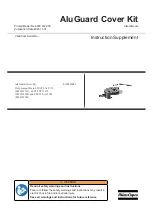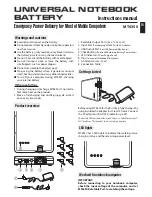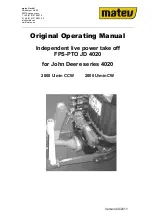
Glossary
G-17
G
PDF 417
A two-dimensional stacked symbology. Each row in the symbol includes start/stop
characters, row identifiers, and symbol characters, which consist of four bars and four
spaces each and contain the actual data. PDF 417 provides an extensive error detection
and correction option that can recover up to 510 characters lost due to a damaged label
or to an error in scanning.
peer-to-peer network
A type of LAN whose workstations are capable of being both clients and servers.
PIC
Peripheral interface controller. The PIC processor is an internal processor that manages
the terminal’s batteries.
pixel
Pixel element. One spot in a rectilinear grid of thousands of such spots that are
individually “painted” to form an image produced on the screen by a computer or on
paper by a printer. A pixel is the smallest element that display software can manipulate in
creating letters, numbers, or graphics.
Plessey code
A fixed length, continuous, and non self-checking bar code symbology. Plessey code is
pulse-width modulated. It includes a start character, data characters, an eight-bit cyclic
check digit, a termination bar, and usually a reverse start character. Similar to “MSI
code.”
Poll
Poll character. Sent by the host to request terminal data.
port
For hardware, a connecting component that allows a microprocessor to communicate
with a peripheral device. For software, a memory address that identifies the physical
circuit used to transfer information between a microprocessor and a peripheral device.
POST
Power-on self test. This test runs when you boot the terminal. The test ensures that the
terminal’s hardware and peripherals are operational.
postamble
A field of data that is sent after the data in a message. It is typically used to tag
transactions from the bar code reader or terminal for rapid processing by the host, and it
expands the data field (record) length. Similar to the “preamble.”
Summary of Contents for Trakker Antares 2420
Page 1: ...TRAKKERAntares 2420and2425 Hand HeldTerminal P N 064024 006 User s Manual...
Page 15: ...nuggetf code39 Contents xv Glossary Index G I...
Page 16: ...xvi...
Page 24: ...xxiv...
Page 25: ...nuggetf code39 Getting Started 1...
Page 26: ...1 2...
Page 60: ...1 36...
Page 61: ...Learning How to Use the Terminal 2...
Page 62: ...2 2...
Page 103: ...Co de 39 Nugget Configuring the Terminal 3...
Page 104: ...Co de 39 Nugget 3 2...
Page 134: ...3 32...
Page 135: ...Operating the Terminal in a Network 4...
Page 136: ...4 2...
Page 173: ...Using Custom Applications 5...
Page 174: ...5 2...
Page 193: ...Troubleshooting 6...
Page 194: ...6 2...
Page 219: ...Running Diagnostics 7...
Page 220: ...7 2...
Page 243: ...Reader Command Reference 8...
Page 244: ...8 2...
Page 268: ...8 26...
Page 269: ...Configuration Command Reference 9...
Page 270: ...9 2...
Page 389: ...Terminal Specifications A...
Page 390: ...A 2...
Page 404: ...A 16...
Page 405: ...Full ASCII Charts B...
Page 406: ...B 2...
Page 415: ...International Character Support C...
Page 416: ...C 2...
Page 427: ...Using the Default Applications D...
Page 428: ...D 2...
Page 438: ...D 12...
Page 439: ...Glossary G...
Page 440: ...G 2...
Page 463: ...Index I...
Page 464: ...I 2...
Page 480: ...I 18...
















































